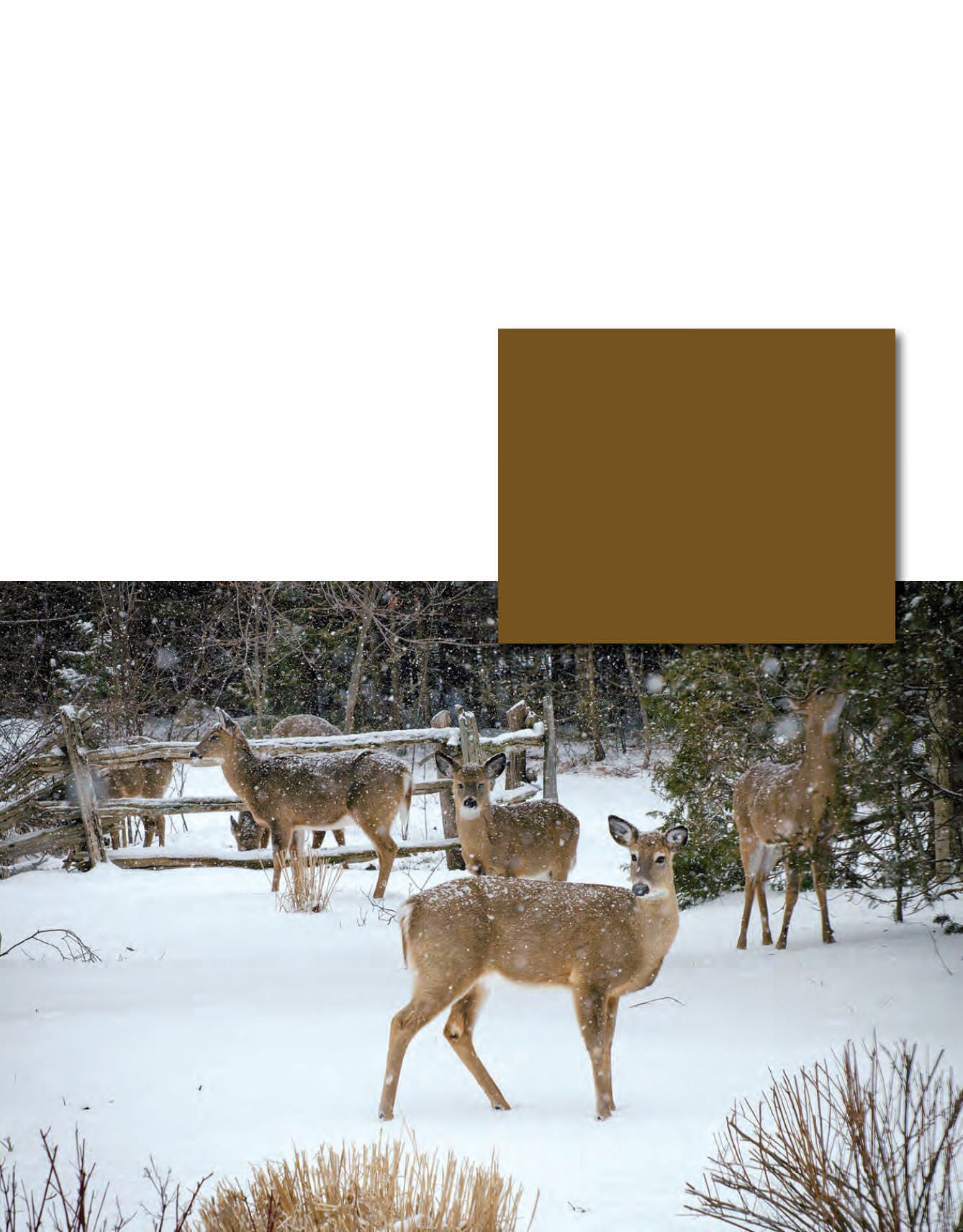
107
Harvest & Holiday 2013
Escarpment Magazine
Deer in Canada are relatively free of serious diseases or parasites. In
much of their range their natural predators, such as the timber wolf, coy-
ote, bobcat, and mountain lion, have been greatly reduced in number
and infrequently exert substantial pressure on the deer. Most of the pre-
dation on fawns occurs during the first few weeks of life. Free-roaming
dogs do sometimes take a heavy toll on deer of all ages, particularly in
late winter when crusted snow aids the dogs but hinders the weakened
deer.
Although a series of severe winters may tend to shrink the range of the
white-tailed deer in Canada, a few favourable years permit it to rebuild
substantial populations, and even extend its range farther northward.
Maintaining healthy stocks of white-tailed deer is primarily a matter of
keeping numbers of deer in balance with their supply of winter food.
People engaged in activities that alter the landscape can improve the
availability of food and shelter for deer, particularly during harsh win-
ters. For example, logging in the forest, which normally favours deer by
opening the high canopy so that new growth will start on the forest floor,
can be made even more beneficial to the deer if cover is left in place to
shelter them from the deep snow. In eastern Canada, hemlock is the
best cover, followed by cedar, balsam, spruce, and pine. In areas
where brushy or woodland cover is scarce, such as on the prairies, suit-
able habitat can be saved from land clearing for agriculture.
Given adequate food and shelter, healthy deer populations grow rap-
idly if the annual increment of animals is not hunted. Overpopulation
invariably leads to pressure on food supplies, which results in malnutri-
tion, even in the face of heavy predation. Too many deer can do im-
mense damage to their winter range, depleting suitable browse species
and sometimes preventing regeneration of valuable forest trees. Mod-
erately heavy hunting helps prevent these natural catastrophes by hold-
ing deer numbers in check while, at the same time, providing recreation
and valuable meat.
|E|
How Can I Prevent Conflicts?
Make your property unwelcoming...
• Never feed deer.
• Landscaping with deer-resistant plants will deter
deer from damaging property. Species include juniper,
sumac, birch, dogwood, pine and flowers such as daisy,
geranium and iris.
• Deer tend to avoid plants with thorns, fuzzy or
velvety leaves or a strong taste. Try strategically
planting these species in your garden.
• The presence of a dog can help keep deer away.
However, dogs are not permitted to chase deer
unless accompanied by a licensed hunter in the open season.
For more information, see the Ontario Ministry
of Natural Resources website at
Human and White-tailed Deer Conflicts...
Preventing and managing conflicts between humans and white-
tailed deer is a topic of considerable interest for some people in
Ontario. Human-deer conflicts occur when there is some type of
social, economic or ecological impact to humans as a result of
white-tailed deer (e.g., agricultural crop damage, vehicle colli-
sions, airport safety hazards, etc). Human-deer conflicts generally
increase as deer populations grow in number, therefore it is an
important consideration for white-tailed deer management.
Photo | Clay Dolan


